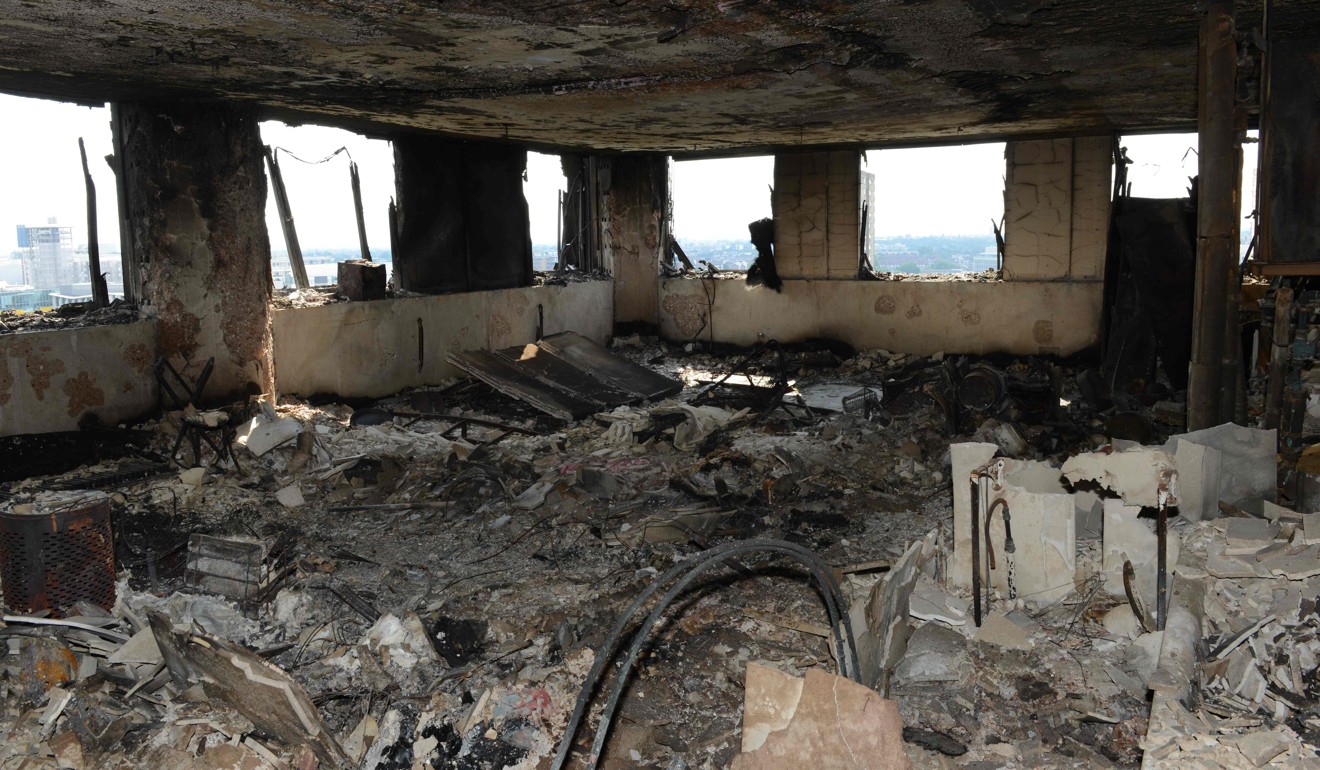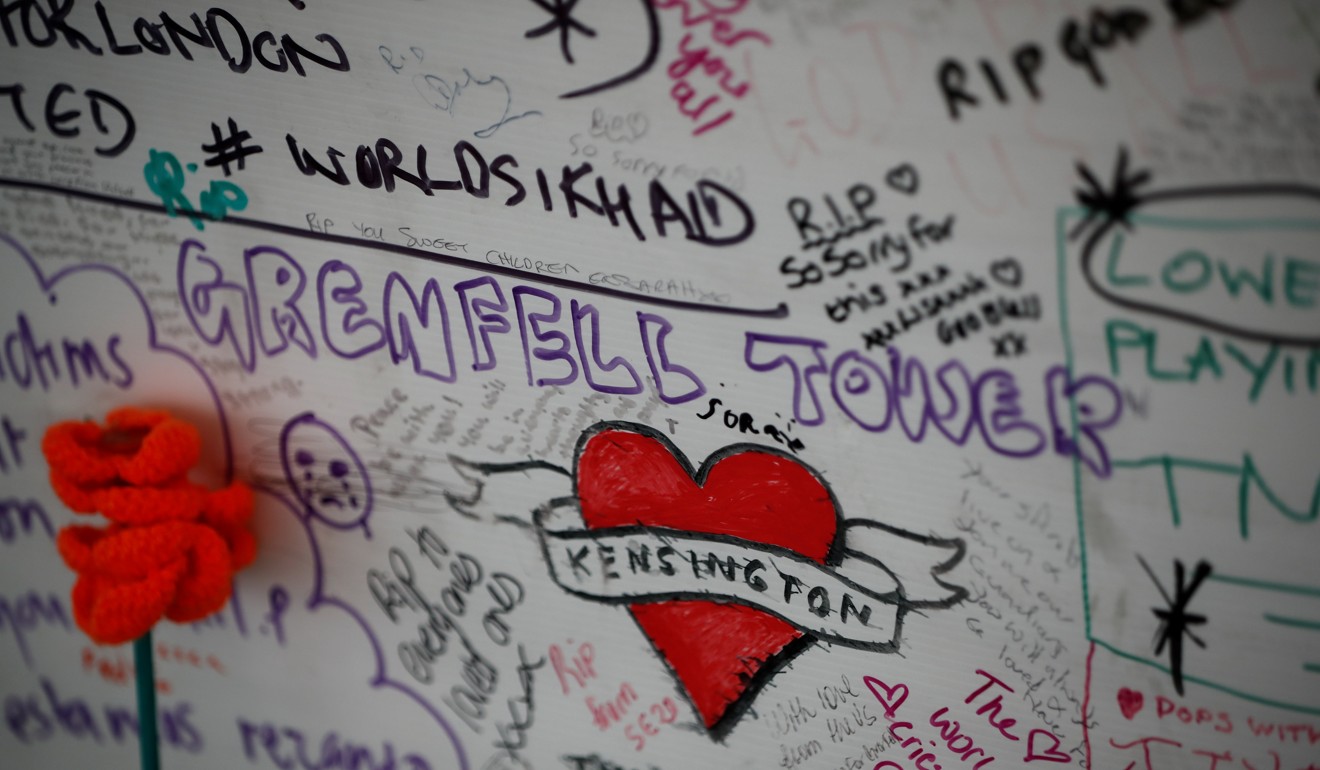
Grenfell Tower residents in uproar over failure to distribute donations, five weeks after fire
Angry questions were raised at a public meeting on Tuesday over the £20 million (US$26 million) raised by charities and individual fundraisers for the victims of the Grenfell Tower fire, with residents demanding to know why so little money had been disbursed to affected residents.
“Where is this money? It’s not reaching the Grenfell survivors,” shouted one person. “This is money that was given by Joe Public; where is it now? Who gives these people the right to say how this money is distributed?”
The questions were directed at a panel of experts invited by the Grenfell Response Team, the official government and local authority unit which organised the two-hour meeting at the Notting Hill Methodist church.
Barry Quirk, the interim chief executive of Kensington and Chelsea council, said the sums raised were phenomenal and included money donated via 700 JustGiving pages as well as major appeals launched by the Red Cross, the Evening Standard and the Kensington and Chelsea Foundation.

According to the BBC, less than £800,000 of the £20 million donated has been disbursed in the five weeks since the June 14 blaze. Charities and others involved in managing the money say they have to ensure it is properly accounted for and it reaches the right people. But some admit that the multiple appeals and funds have led to a chaotic situation.
The second public meeting within a week again saw furious residents vent their anger on public officials, with calls of “resign” and “liars” resounding around the church’s worship space. The chairperson struggled to keep any semblance of order as heated and emotional residents shouted at the panel and each other.
Official casualty figures were repeatedly challenged, with some claiming that the police were covering up the true scale of the disaster for political reasons. One woman suggested that people who had thrown themselves or fallen from the burning tower and those who later died in hospital had not been counted in the official figure of 80, which police admit could increase by a small number.

Fox conceded that the final death toll may be more than 80, or may never be definitively known, but said “most people will have someone who will report them missing”.
Rianna, 17, was heard in rare silence as she told of her eight-year-old nephew’s confusion and distress at losing his teacher in the fire and the failure of the authorities to offer counselling.
“Growing up in this community, I loved it. But this whole tragedy has made me see that we have no support from you,” she told the panel. “You are supposed to support us … It’s hard to watch people fall, jump, lose their families.”
Quirk told her: “It’s absolutely clear to me you’ve been let down by the statutory public authorities … I will do everything in my power to change the management of this organisation, so people can help you 24/7, whenever you need it.”
Mahad, a tower resident, said it was wrong to call the people of north Kensington poor or uneducated. “We are rich, rich in dignity. You are dishonouring all of us, traumatising a whole community … You have been put in a position of trust and you have let the people down.”
He accused the officials of working on behalf of the borough’s wealthy residents: “We will look after our children and our future. There’s no way that you who work for the rich folks are going to push us out of our homes and our community.”
Concern continues to grow over the safety of hundreds of other buildings which used similar cladding to Grenfell Tower. The Department for Communities and Local Government said on Tuesday that 243 buildings in 57 local authority areas had failed combustibility tests on samples of their panel systems, a 100 per cent failure rate. These comprise 235 high-rise residential buildings, one combined school/residential building, another school and six buildings at five NHS trusts.
The tests have been criticised as being too simplistic because only the combustibility of the core material inside aluminium sandwich panels was assessed. The government’s expert advisory panel on the fire risk from cladding, led by Sir Ken Knight, a former government chief fire and rescue adviser, is now overseeing large-scale tests on six full cladding systems made up of cladding panels, insulation material and fire breaks, to see how the whole system responds in a blaze.
The government has also warned landlords that the removal of cladding, leaving combustible insulation exposed, must not be allowed to increase the fire risk to buildings.

